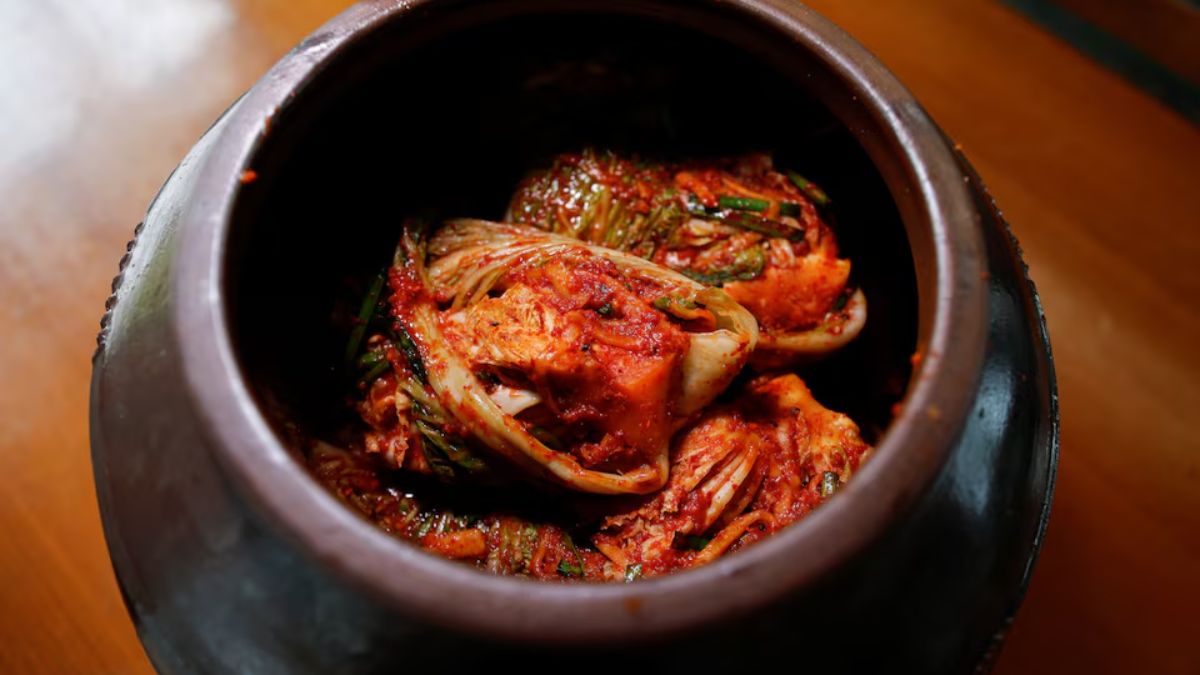Climate change is becoming more and more of a threat with each passing day.
The latest addition to the myriad threats posed by climate change is to food lovers — specifically those that are fond of South Korea’s Kimchi.
Climate change is impacting the quality and quantity of the napa cabbage used to make the famed dish.
Since napa cabbage blooms best in cold temperatures, they are planted in the mountainous regions.
Here, the temperature during the summer, the key growing season, remains above 25 degrees Celsius.
But now, rising temperatures in the region are threatening the crops — so much so that South Korea might not be able to grow napa cabbage one day due to the intensifying heat.
“We hope these predictions don’t come to pass,” plant pathologist and virologist Lee Young-gyu told Reuters.
“Cabbage likes to grow in cool climates and adapts to a very narrow band of temperatures,” Lee said.
“The optimal temperatures are between 18 and 21 degrees Celsius.”
The change is already being felt across the Kimchi industry with farmers lamenting the poor quality of cabbage.
Though Kimchi can be made with other vegetables such as radish, cucumber and green onion, its cabbage preparation remains the most popular.
How does climate change affect napa cabbage?
Impact Shorts
More ShortsDescribing the effect of higher temperatures on the vegetable, Lee Ha-yeon, who holds the designation of Kimchi Master from the Agriculture Ministry, said the heart of the cabbage “goes bad, and the root becomes mushy.”
Lee further said, “If this continues, then in the summer time we might have to give up cabbage kimchi.”
Data from the government statistics agency shows the area of highland cabbage farmed last year was less than half of what it was 20 years ago — down to 3,995 hectares as compared to 8,796 hectares.
What are researchers predicting?
According to the Rural Development Administration, a state farming think-tank, climate change scenarios project the farmed area to shrink dramatically in the next 25 years to just 44 hectares.
It says no cabbage will be grown in the highlands by 2090.
Researchers cite higher temperatures, unpredictable heavy rains and pests that become more difficult to control in the warmer and longer summers as the cause for the crop shrinkage. A fungal infection that wilts the plant has also been particularly troublesome for farmers because it only becomes apparent very close to harvest.
From where is South Korea getting its current supply of kimchi?
Climate change adds to the challenges facing South Korea’s kimchi industry, which is already battling lower-priced imports from China, which are mostly served in restaurants. Customs data released on Monday (September 2) showed kimchi imports through the end of July were up 6.9 per cent at $98.5 million this year, almost all of it from China and the highest ever for the period.
So far, the government has relied on massive climate-controlled storage to prevent price spikes and shortages. Scientists are also racing to develop crop varieties that can grow in warmer climates and that are more resilient to large fluctuations in rainfall and infections.
But farmers like Kim Si-gap, 71, who has worked in the cabbage fields of the eastern region of Gangneung all his life, fear these varieties will be more expensive to grow in addition to not tasting quite right.
“When we see the reports that there will come a time in Korea when we can no longer grow cabbage, it was shocking on the one hand and also sad at the same time,” Kim said.
“Kimchi is something we must have on the table. What are we going to do if this happens?”
With inputs from Reuters
)